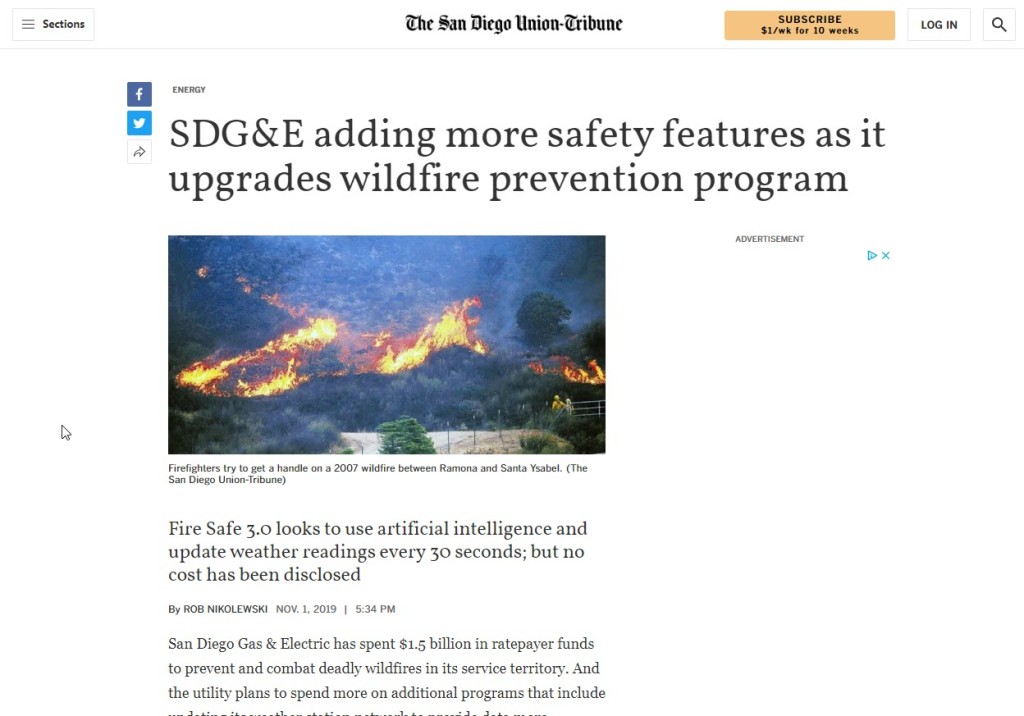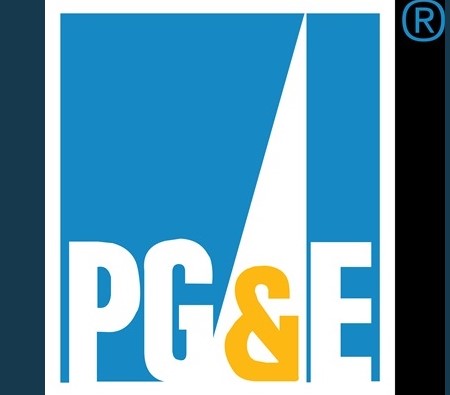In my last post we looked at the premise is PG&E responsible for the California wildfires. Numerous experts have pointed to a myriad of PG&E failures that have directly caused wildfires and put PG&E in a very tenuous position regarding their finances and future. But what can be done?

The March 2019 NYT article points to best practices too – “State officials say there is a good template elsewhere in California for what PG&E should be aiming for: the practices of San Diego Gas & Electric.” SDG&E “has added hundreds of weather stations, cameras and satellite technology in recent years to reduce fire risk. PG&E is now trying to catch up.” SDG&E does this by keeping data on every utility pole and transmission tower, the use of approximately “177 stations to monitor temperature, humidity and wind speeds,” plus the use of high-definition video and satellite imagery. Most recently, SDG&E has been looking into the use of artificial intelligence to assist in these technology efforts.
SDG&E also cuts power during high wildfire threats, but obviously has many more options and technology tools in their repertoire to help with analysis and decision making.
The NYT article concludes by saying – “The risk of wildfires in California has clearly gone up, but Robert McCullough, a longtime consultant to energy companies and state and federal officials investigating them, said there would have been far fewer destructive fires had PG&E followed San Diego’s lead years ago. ‘Their culture of a lack of safety is unique, in my opinion’ he said.”
Business practices that put profits ahead of safety, ignore the input from those closest to the work, do not pay attention to industry advances and the latest science, and supervisors who lack the subject matter expertise to apply good judgement all point to a corporate culture that puts more California residents at risk.
Organizational Structure
PG&E is an investor-owned public utility and is traded on the stock market. This strikes me as an implicit conflict of interest. A public utility should serve the populace. Yet, we all know that investors who own stock want to see profitability. In doing the research I found numerous mentions of how PG&E, like many corporate organizations, is first focused on “making the number.”
Following the 2010 gas pipeline explosion in San Bruno, which killed eight people, PG&E was involved in considerable litigation and investigation. During litigation, according to the March 2019 NYT article, “employees said supervisors routinely ignored their concerns about the company’s use of faulty analysis and outdated equipment. The state’s Public Utilities Commission, which regulates PG&E, concluded that the company was more concerned with profit than with safety.” The relentless focus on profits meant that maintenance and investments in needed technology were not prioritized.
We have recently heard arguments that the State of California, in cooperation with the major cities, should take over the management of PG&E, or the company should somehow be broken up. I’m sure this will continue to be investigated.
For example, San Jose Mayor Sam Liccardo addressing the bankruptcy and structure of PG&E has assembled a group of government leaders who proposed setting up PG&E as a customer-owned utility.
As first reported by the Wall Street Journal at the end of October 2019 and detailed in the San Francisco Chronicle on November 5th – “San Jose Mayor Sam Liccardo’s push to transform Pacific Gas and Electric Co. from an investor-owned private utility into a customer-owned cooperative is gaining traction.”
In a letter to the CPUC 20 primarily Northern California Mayors and County Supervisors requested the CPUC consider the idea of transforming PG&E’s structure. Currently, the CPUC is looking at two plans, which the Mayor’s argue are both advocated by financial interests looking to “maximize financial gain for their proponents.”
Further, the current plans ignore “the organic operational issues that have plagued this company to the great detriment of its customers.” The Mayors say a customer-owned PG&E could pull funding from a broader pool of resources and “save ratepayers many billions of dollars in financing costs over this next decade.”
Perhaps, in the immediate future, the State and major cities could increase resources in helping PG&E with the incredible task of lessening the fire danger in the state. State resources could be applied to the removal of trees and other foliage around power lines and transmission towers in conjunction with PG&E workers who would still do the close in work. We could use more education for homeowners and others on how to make their homes and yards safer too.
Neighborhood outreach to assemble and train groups to help rid areas of dangerous brush and foliage would be useful in two ways: (1) it would help with the removal of fire prone materials; and (2) would give PG&E an approach to change their image in their client communities. There are already examples of neighborhood groups who have a major impact on cleaning up local areas.
Given the scope of the wildfire danger, we need to apply ourselves to solutions that can work. Much of this is required by PG&E, but clearly, they need help too. In my next post we will look at ways to transform corporate culture and discuss how a knowledge-based approach to problem solving can help PG&E.



Really nice work George in unpacking a very complex situation by articulating the optics in a very comprehensible manner. Lots to digest here.
LikeLiked by 1 person
Thx for your kind comments! This was definitely part of my goal for the piece.
LikeLike